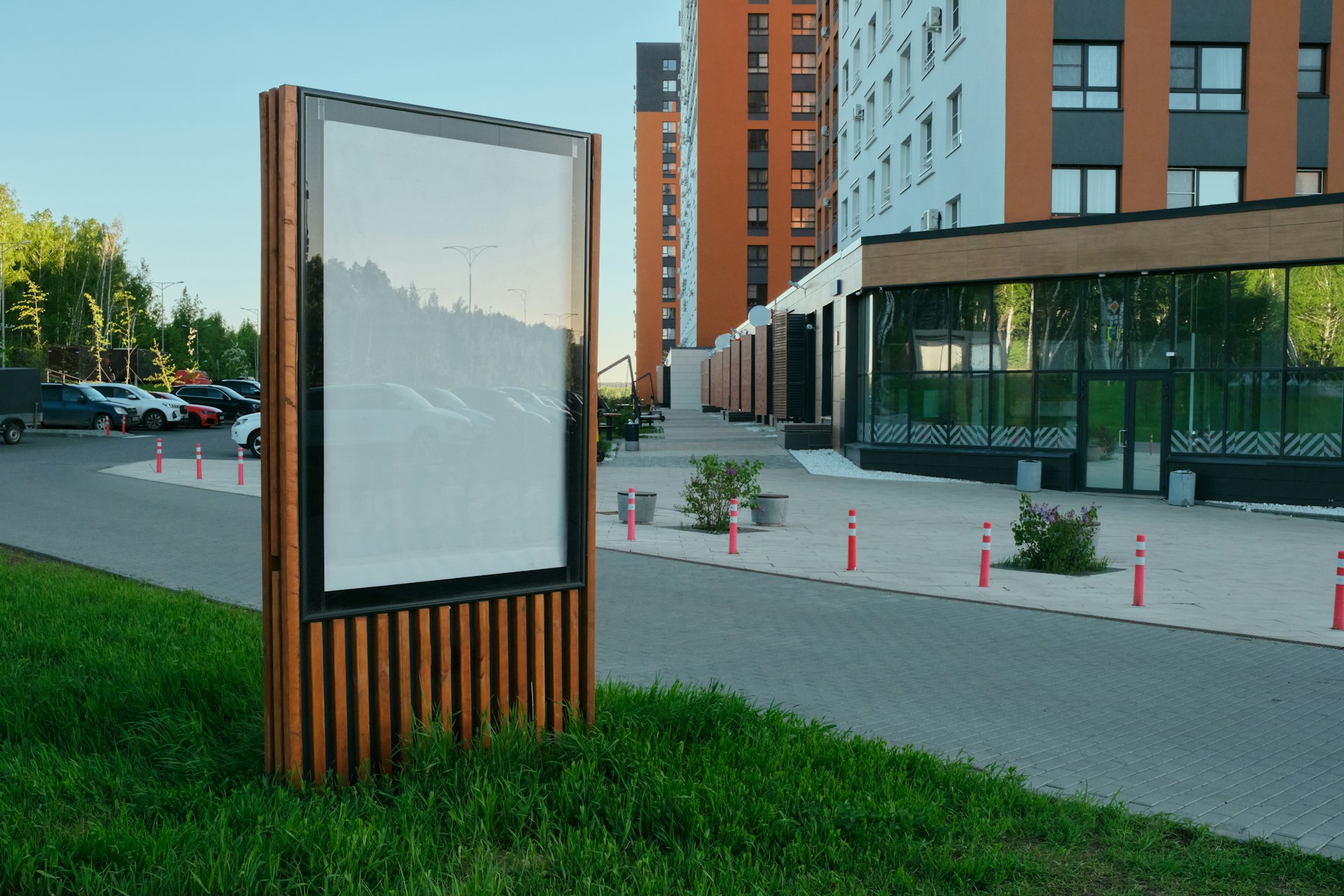Business signs do more than just tell people your name or location. They help shape how customers see your company. When they’re clean, sharp, and well-lit, people notice. When they’re faded, cracked, or dirty, they notice that too. Over time, even the best signs can wear down from weather, dirt, and sunlight. That’s why taking care of them isn’t just about appearance, it’s about protecting the investment you already made.
There’s a difference between indoor and outdoor signage when it comes to wear and tear. Indoor signs face fewer environmental threats, but still need to hold up over time. Outdoor signs, on the other hand, deal with sun, rain, wind, and sometimes even snow or dust. Each type of sign has its own needs when it comes to care and maintenance. But with the right steps, both types can stay looking sharp a lot longer. Here’s how to make sure your signs don’t fade out before their time.
Choose The Right Materials
One of the best ways to help your signs last longer starts before they even go up. Picking the right materials plays a big part in how long a sign sticks around without losing its look. Not every surface is fit for every environment, so matching the material to the setting matters a lot.
For indoor signage, materials like foam board, PVC, and acrylic work well when used in climate-controlled areas. These surfaces are usually flat, lightweight, and made to keep their shape. Acrylic, in particular, holds up to aging and can give a clean, modern look that works in lobbies or behind front counters. Foam board is budget-friendly and good for short to mid-term use, especially at events or temporary setups.
Outdoor signs need materials built to handle heat, cold, moisture, and lots of sun. That’s where metal, aluminum composites, and high-quality vinyl come in. Metal signs coated with paint or powder resist rust and won’t warp under tough weather. High-grade vinyl, especially the kind used on vehicles or building fronts, can take a lot more abuse before you start seeing issues like peeling or fading.
Here are examples of matching material to environment:
– Indoor: Acrylic signs for office branding or directional signs in hallways
– Outdoor: Aluminum panels for building signage, or UV-resistant vinyl for window graphics
The lifespan of your sign really starts with what it’s made from. A sign printed on flimsy material might cost less up front, but it could break down way faster under pressure. It’s better to spend a little more at the start and avoid constant replacements down the line.
Regular Maintenance Tips
A good sign can keep working for years, but only if it’s taken care of. Dirt, water spots, and mold can blur or block the message. Small cracks might not seem like much at first but could lead to full-on damage if ignored. Taking a little time to check and clean your signs regularly helps stop problems before they grow.
Here’s a simple way to stay on top of maintenance:
1. Wipe signs down weekly with a soft cloth and mild soap to remove dust, pollen, and grime.
2. Rinse with clean water and dry to avoid water streaks or spots.
3. Inspect indoor and outdoor signs monthly for cracks, sun bleaching, or lifted edges.
4. Use a flashlight to check lighting or backlit signs to make sure all sections are still evenly lit.
5. Schedule professional cleaning or minor repairs once or twice per year if the area is hard to reach or heavily exposed.
Smaller maintenance tasks go a long way. A faded letter might just need a reprint or overlay, and surface scratches on clear acrylic can sometimes be buffed out. Catch these early and you save both money and time. One business owner had a vinyl window sign start peeling in one corner. It didn’t seem serious at first, but a storm knocked the rest loose and it had to be completely redone. A quick spot check could have avoided the extra cost and headache.
It’s not about making signs perfect all the time. It’s just about making sure they keep doing their job, looking clean, sharp, and easy to read. A few minutes during a regular business day is all it takes to make the difference.
Protect From Weather Elements
Outdoor signage has to deal with a lot more than just eyeballs. Sun, rain, wind, and freezing temps all take their toll over time. The sun alone can bleach colors, turning reds to orange and blues to pale shades that no longer match your original design. Water can leak behind materials, lifting corners or causing warping. And let’s not forget about strong wind gusts, which can push or bend signs that aren’t properly anchored.
To keep outdoor signs in good shape for longer, it’s smart to take a few extra steps:
– Use UV-resistant coatings or laminates. These help block the sun’s rays and keep the colors from fading too quickly.
– For metal signs, consider powder-coated finishes. They’re tougher and hold up better against moisture and rust.
– Add an overhang, awning, or physical shield for shade and protection against wind-driven rain and debris.
– If the sign is up against glass, keep in mind that trapped heat can also be a problem. Heat-resistant backing materials can help control warping.
Seasonal changes can sneak up, too. In states with hot summers and cold winters, expansion and contraction from temperature swings can stress materials. Screws might loosen or mounting brackets can shift slightly, messing with how the sign sits. Regular seasonal checks might catch things like that before real damage sets in.
One local business had a sign mounted high on a warehouse wall near a roof drain. Over time, runoff started dripping directly on the edge of the sign every time it rained. Within two years, the lower half of the sign was stained, warped, and the vinyl was peeling. A small gutter extension could have prevented all that. It’s little things like that which can go a long way to protect signs from the weather.
Proper Installation Techniques
Getting your sign installed the right way is just as important as picking the right material. Even the most durable product won’t last long if it’s not installed securely. Signs that shift, fall, or start sagging are a safety issue and a brand issue. They don’t look good, and they won’t hold up under outdoor stress.
Some common problems from poor installation include:
– Loose bolts or anchors that allow the sign to shake or pull away from the wall
– Misaligned panels that create uneven stress points
– Incomplete sealing that lets moisture get in between layers
– Attaching signs to surfaces not rated to bear the weight
Professionals use the right tools and methods to make sure each sign is firmly attached to the right surface. They take into account wind loads, surface stability, and elevation. Even something as simple as taping edges on a vinyl window sign can make a difference. If air or dirt gets in underneath, it’ll start peeling sooner than expected.
For ground-mounted signs, the depth and width of the posts matter. Posts that are too shallow can tilt during heavy rain or shifting soil. For wall-mounted panels, it’s about using the right hardware for materials like brick, stucco, or siding.
To avoid headaches later, signs should also be placed where they can do their job. Whether it’s readability from the road or visibility inside a hallway, placement affects effectiveness. Good positioning also helps shield the sign naturally from harsh elements like direct sunlight or constant wind gusts.
Getting it right from the start means better performance all around. Secure installation keeps things steady, prevents early damage, and just makes the sign look better. A little effort upfront keeps the whole setup running longer without needing a redo.
Keeping Your Signs Looking Great
Extending the life of your sign is about setting it up right, taking care of it, and responding when problems pop up. Signs take on a lot of responsibility when it comes to your brand, so it makes sense to invest time into keeping them sharp. From choosing long-wearing materials to sealing edges and checking for fading, each step adds strength and life to your display.
When you factor in weather, sunlight, and daily wear, even the strongest material benefits from a little help along the way. Routine cleaning, careful inspections, and timely repairs are simple but steady ways to protect signs from bigger issues. Catching small things early, like peeling vinyl or a light bulb outage, keeps your presentation consistent across the board.
It’s also worth thinking a few seasons ahead. If a certain corner of your building gets slammed by rain each spring or if winter winds whip through your lot, make those patterns part of your planning. Keep extra mounting hardware handy, or do a preventative reseal on vulnerable signs before the worst hits.
Signs have a job to do every day. With a smart setup and a little care along the way, they’ll keep working day in and day out without needing to be replaced too soon. A sharp-looking sign says a lot before anyone walks through your doors. Keeping it in top shape tells people you’re paying attention—even to the small stuff.
Ensure your signs stand the test of time with Hyperformance Graphics’ expertise in selecting and maintaining quality displays. Whether you’re looking for durability indoors or resistance to the elements outside, we can guide you every step of the way.
Experience the benefits of superior materials and expert care by exploring our solutions for both indoor and outdoor signage. Ready to elevate your brand’s visibility? Discover our range of fleet graphics installation services tailored to meet the unique needs of your business.



